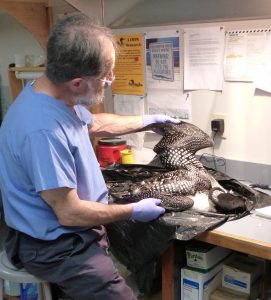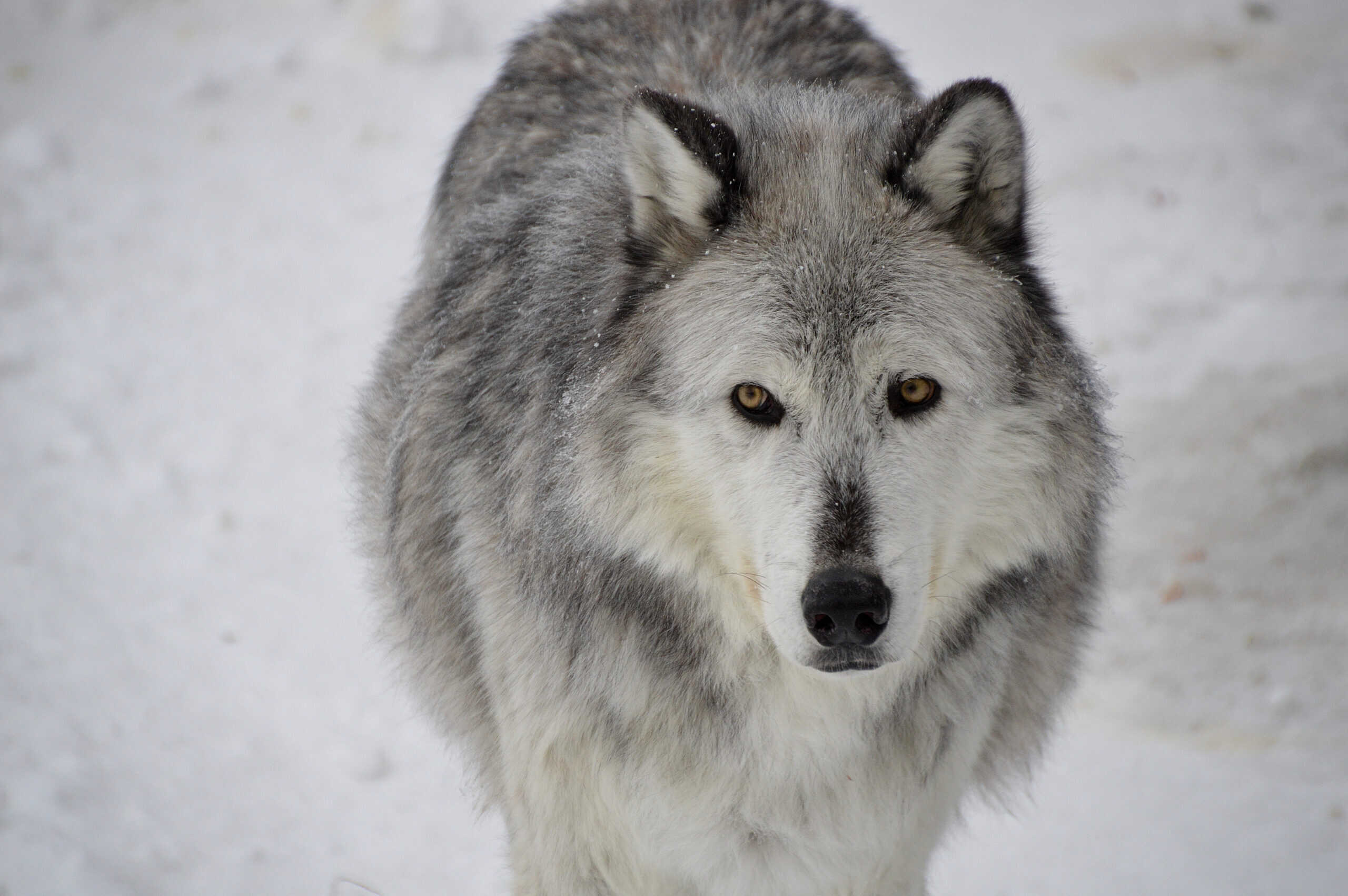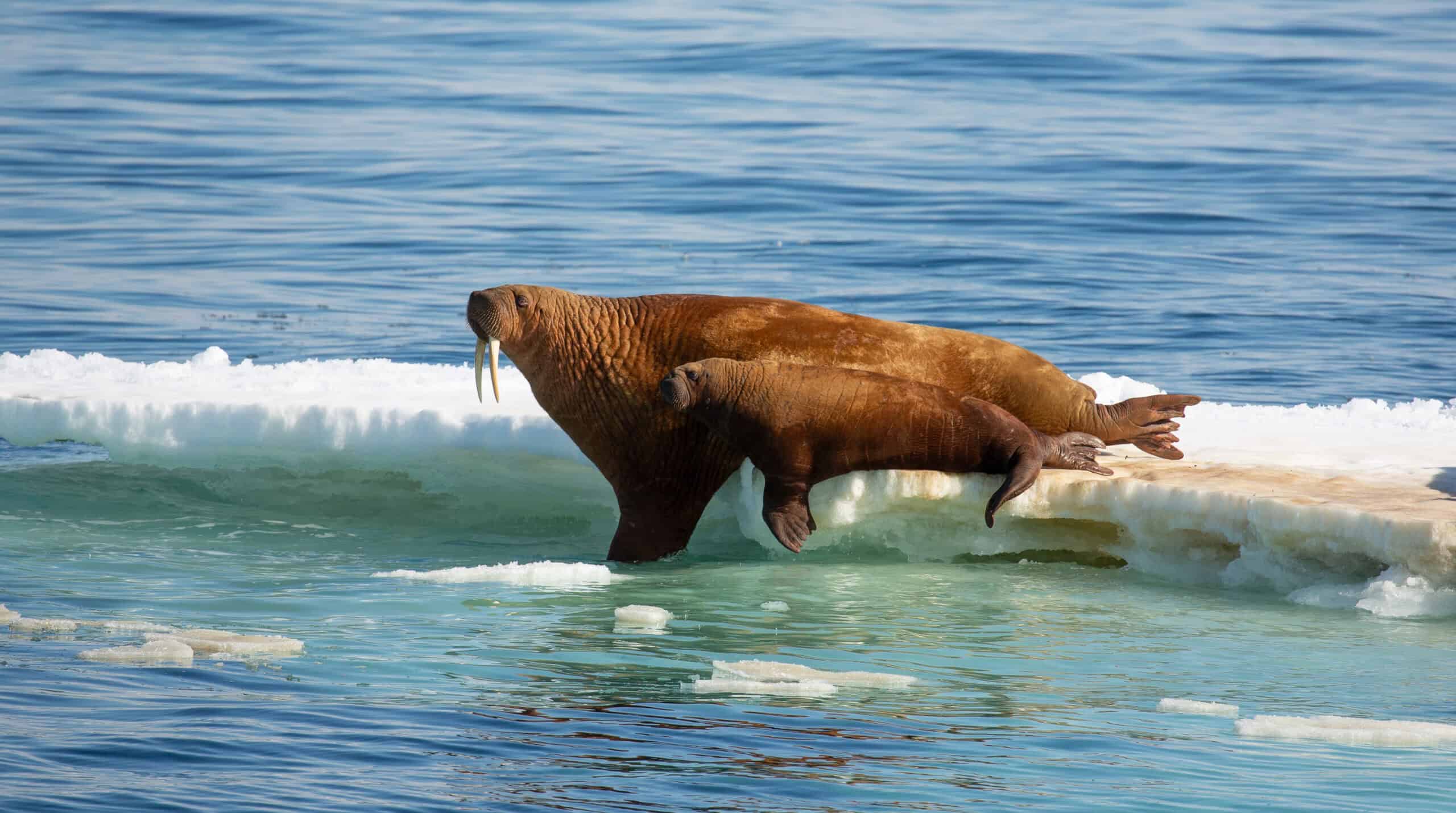Share this article
JWM: Lead tackle sinking NH loons
Lead tackle is responsible for nearly half the deaths of adult loons in New Hampshire, a recent study found, reducing the bird’s population in the state by 43 percent.
“This is having a very large effect on the loon population,” said TWS member Tiffany Grade, a biologist with the Loon Preservation Committee and lead author on the study published in the Journal of Wildlife Management.
Grade and her team examined necropsies of loons performed between 1989 and 2012 and found 48.6 percent of their deaths resulted from toxicosis from ingesting lead tackle — mostly jigs and sinkers. The result was a 1.4 percent drop in the population growth rate of loons, a state-listed threatened species in New Hampshire.
“We’ve been able to increase the loon population in New Hampshire through intensive management work over the years,” Grade said. “Lead has been the literal weight holding back the recovery.”

Tufts University’s Dr. Mark Pokras prepares a necropsy for a loon that died of lead poisoning after ingesting lead tackle. ©Loon Preservation Committee
Based in part on this research, new state regulations went into effect in 2016 banning most lead tackle. That should decrease the problem, Grade said, but lead poisoning will likely continue as long as old tackle remains in use, and it will still affect loons and other waterfowl in other areas where lead tackle remains in use.
“Loons are the tip of the iceberg,” she said. “I can only imagine how many other species are suffering the effects of lead in the environment.”
Researchers examined a database of necropsies performed between 1989 and 2012 by Dr. Mark Pokras, associate professor emeritus at Tufts University’s Cummings School of Veterinary Medicine. They collected the mortality data and constructed a population model to determine the impact these poisoned loons had on the bird’s recovery.
The birds appear to be ingesting the tackle by either eating fish that have broken free of a fishing line or by eating fish or bait on the line, Grade said.
The acid and grinding action of the gizzard causes the lead to erode and enter the bloodstream, affecting the brain and nervous system and leading to trembling, weakness and death. Most die within two to four weeks. “It’s a really terrible way for a loon to go,” Grade said.
“Loons are dealing with so many issues,” she said. “Emerging threats like climate change are going to be huge for loons. This is the low-hanging fruit. This is something that’s so preventable.”
TWS members can log into Your Membership to read this paper on early view in the Journal of Wildlife Management. Go to Publications and then Journal of Wildlife Management.
Header Image: A study in the Journal of Wildlife Management found lead tackle is the top cause of death for loons in New Hampshire and has had a significant impact on their population. ©Mark Giuliucci








